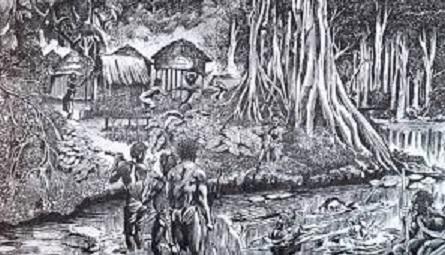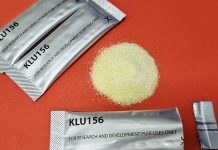Africa-Press – Mauritius. THE 1ST FEBRUARY 2007 marks the 172nd anniversary of the abolition of slavery in Mauritius. It is also a special public holiday when the struggle for individual freedom, the achievements and contribution of the Mauritian slaves and maroons in the making of this great country is remembered and honored.
The 1st February is a day when freedom is celebrated, after all, under slavery, thousands of Mauritian slaves tried to obtain their freedom through maroonage.
During the entire period that maroonage existed in colonial Mauritius, between 1641 and 1839, it was common for maroons or runaway slaves or fugitive slaves to organise themselves into either small or large bands or gangs.
These maroon bands lived in the forests, mountains, ravines and near to the rivers of the island. They frequently carried out raids on both large and small plantations, which were owned mostly by white and some free coloured individuals.
Between the 1730s and 1820s, some of these gangs or bands of fugitive slaves were well organised also well armed and they struck terror into the hearts and minds of the island?s slaveowners and colonial officials.
In a mostly harsh and hostile environment and relentlessly pursued by colonial forces which either sought their capture or destruction, the Mauritian maroons organised themselves and chose leaders from within their own ranks as an organized strategy of survival in the wilderness.
Their firm objective was to obtain strength in numbers which permitted them to preserve their freedom and to fight the armed colonial detachments or maroon catching units.
Most of these maroon bands were led by maroon leaders or maroon band chiefs who were intelligent, skilled fighters and resourceful individuals. From the Mauritius Archives, there are the names and exploits of several maroon leaders which have come down to us.
Between the 1730s and early 1800s, some of these outstanding maroon chiefs or leaders were Sans Soucis, Pedre Coutoupa and Bellaca of Le Morne. ■ Sans Soucis On 26 November 1739, Jasmin and several other free blacks, who belonged to a maroon hunting detachment, discovered a maroon camp on the bank of Suzlo River in the district of Flacq.
This camp was occupied by four male maroons who were armed with guns and several female maroons. Sans Soucis, a Mozambican slave who belonged to Mr de St. Martin, was the leader of this small maroon band.
When Jasmin and the other free blacks attacked this maroon camp, they encountered stiff resistance and several shots were fired at them, but missed their targets.
The detachments managed to fire back and the three male band members were able to escape into the forest, while Sans Soucis, three female maroons and one maroon child were captured.
When questioned, Sans Soucis revealed that he had been a maroon for 13 years thus, in effect, he became a fugitive slave in 1726. The maroon leader was known to have been responsible for various ?crimes? such as theft and arson on a number of plantations in the district of Flacq.
Shortly after his capture, Sans Souci was put on trial, found guilt and executed. ■ Pedre Coutoupa In March 1794, a detachment was able to capture Pedre Coutoupa (or Coujoupa) and his band of 12 maroons in the Plaine des Roches. When questioned, Coutoupa explained that his fellow maroons had chosen him to become their leader in order to protect them.
François, a male Indian slave belonging to Mr Nayna, a free coloured of Indian descent, recognized Coutoupa as the chief of the maroon band and he also held the title of ?commandeur des noirs marrons? in the eastern and northern regions of the island.
Coutoupa was a Mozambican slave of the Makua tribe, he was in his thirties and belonged to Citoyen Maniac who resided at Piton, Rivière du Rempart. In 1793 and during the early months of 1794, Coutoupa and his band operated in the area of southern Rivière du Rempart and northern Flacq, with their headquarters being at Plaine des Roches.
The maroon band frequently stayed in the woods which were found on the extensive property of Citoyen Merven which was located in the same region. Shortly after their capture, on 28 March 1794, Coutoupa and his band were presented before the Comité de Sureté Publique of the Colonial Assembly.
He was accused of being a grand maroon as well as being responsible for a series of thefts, kidnappings and of murdering Citoyen Peltier. His principal lieutenants were Vincent, a Malagasy slave, belonging to Citoyen Moreay and François, a creole slave, belonging to Citoyen Toutain.
On the same day, the Comité decided that Coutoupa and his band should be put on trial. Eventually, Coutoupa and his twelve followers were found guilty on all charges and were executed.
■ Bellaca of Le Morne Between 1797 and 1802, a proclamation was issued by the Colonial Assembly ?offering to liberate any slave and his family, who would arrest the banditti (or maroon chief), named Bellaca, who had taken possession of the Morne?.
Four individuals, the children of Stalinas Cerf or the slave who had killed Bellaca, were still detained as apprentices in the Black River district in 1836 and were attempting to secure their freedom based on this specific piece of information.
In 1830, they had made the same bid for freedom based on the same claim with the Protector of Slaves which turned out to be futile just like in 1836. It should be noted that there are two documents at the Mauritius Archives which clearly mention that a maroon chief named Bellaca did take possession of Le Morne Brabant mountain between the late 1790s and early 1800s.
Furthermore, he posed such a great threat that the local colonial authorities issued an official proclamation for his capture. Apparently, he was killed by Stalinas Cerf, a slave belonging to Mr Le Normand, who resided in Black River district.
The Mauritian maroon leaders and their followers were by no account a degraded lot as it has sometimes been suggested by some European visitors and traditional Mauritian historians.
For decades, the Mauritian maroons and their leaders waged a protracted and valiant campaign against slavery and colonialism in our small Indian Ocean island and in the process, many of them lost their lives for the noble cause of freedom.
Through their actions, they helped to shape colonial policy and struck fear in the hearts and minds of colonial officials and the slaveowners alike. Thus, to a certain extent, they were the makers as well as the shapers of their own history.
Maroon leaders such as Sans Soucis, Pedre Coutoupa and Bellaca tried to carve a space of freedom in the forests and on the mountains of Mauritius for themselves and their followers. At the same time, they boldly challenged an oppressive colonial slave society which sought either to re-enslave or to destroy them.
Therefore, each 1st February, it is the constant struggle of these maroon leaders and their followers against the colonial maroon hunters and the slaveowners as well as their determination to be free which is being commemorated.
For More News And Analysis About Mauritius Follow Africa-Press







